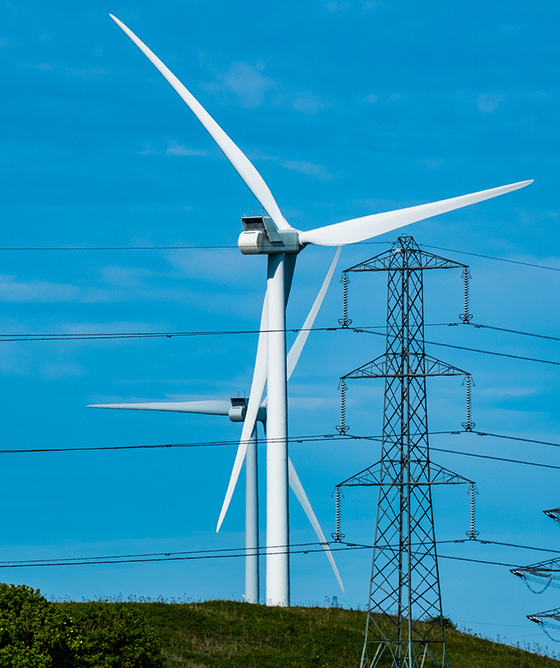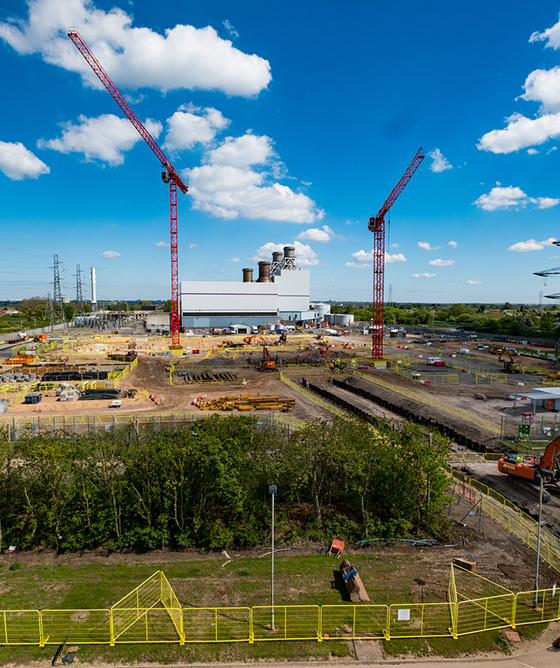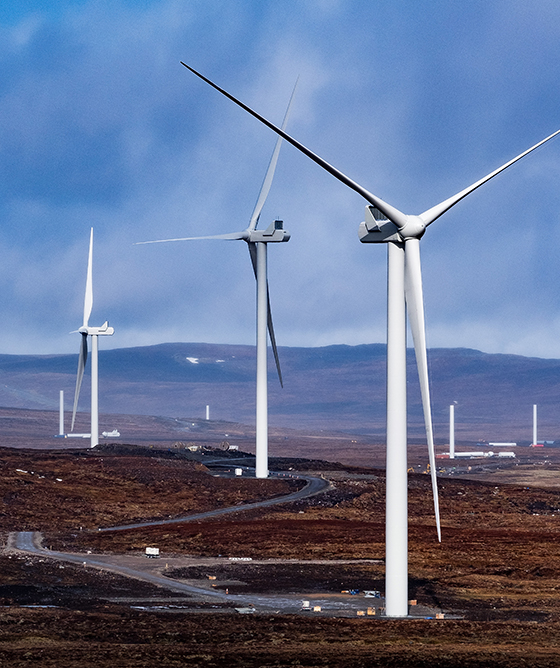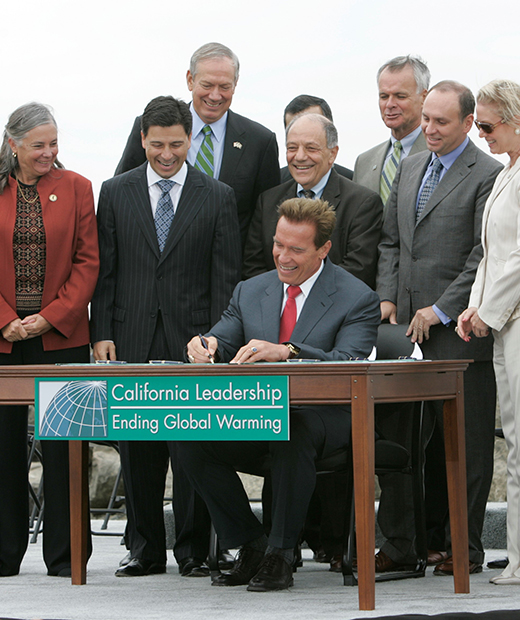This report, which we co-authored with global professional services firm KPMG, sets out what lessons can be learned from the UK’s success in decarbonising the power sector and guide how we can rapidly reduce emissions in power sectors across the globe.
From the passage of the Climate Change Act in 2008 and the years that have followed, it seeks to identify lessons learned along the way, alongside drawing on other international case studies to assess what works and what doesn’t.
Culminating in a set of key principles that can help inform the approach taken by other countries as they develop their national plans.
Foreword

As a leading low-carbon electricity company, we are proud to be working with the UK Government as a Principal Partner of COP26 to support a successful summit in Glasgow in November 2021.
With a heritage in renewable electricity dating back more than 75 years to when our hydro-electric stations brought the first electricity to the north of Scotland, we know the value sustainable, low-carbon electricity can bring to communities, the economy and the environment. We also know that low-carbon electricity is one of the most powerful tools countries can bring to bear in the battle to tackle climate change.
This year, more than ever, countries around the world are facing tough decisions not only on how to bounce back from the economic impacts of coronavirus, but on how to balance this economic imperative with the need to take climate action. Too often, these options are viewed as mutually exclusive. Our experience in the UK shows that this does not have to be the case and that by creating the conditions for investment in low-carbon technologies, governments around the world can deliver the energy transition we need without sacrificing jobs and economic prosperity.
We have been at the forefront of efforts to decarbonise the UK power system for many years. Last year saw the closure of our last coal-fired power station; this year, we are leading construction of more offshore wind than any other company on the planet. We are building the network infrastructure that will be needed to connect rapidly growing renewable capacity and support up to a trebling of electricity demand as net zero power helps other parts of the economy to decarbonise. And we are developing the flexible solutions that will be required to help balance a renewables-led system, from 'nature’s battery' in the form of hydro pumped storage to hydrogen and carbon capture technology.
But we have only been able to do so because the UK has established the right long-term signals and policy frameworks to underpin significant investment. While there are significant challenges ahead, we believe the experience of the UK to date offers a valuable guide for how we need to approach the international power sector decarbonisation challenge. Through this report we hope to share our experiences in the UK and help support others as we seek to collectively decarbonise the global economy by 2050.
Martin Pibworth, Group Energy and Commercial Director, SSE plc
"With most of the world’s economy now signed up to Net Zero, it is essential that we seek to share best practice and lessons learned and build our understanding of how to achieve Net Zero at least cost, whilst maintaining security of supply."
Simon Virley, Vice Chair and Head of Energy and Natural Resources, KPMG

Leading the world on decarbonisation
The challenge of limiting global warming to 1.5°C will require a collaborative international effort; but this collaboration at a global level must be underpinned by rapid progress by individual countries to cut emissions over the next decade and establish a credible path to reaching net zero emissions. This bottom-up approach is at the heart of the Paris Agreement and only works if all countries play their part in tackling the climate crisis.
The Office for Economic Co-operation and Development (OECD) has cited the UK as the most successful major economy in the world at driving down emissions. Despite delivering a reduction in GHG emissions of nearly 50% since 1990, the UK has continued to grow, with GDP increasing by over 75% over the same period. It has decarbonised its electricity system at almost twice the pace of any other of the world’s 30 largest electricity systems major economy, during a period in which it has increased GDP by 75% - a faster rate than other G7 nations.
Find out more on policy interventions that have supported the UK’s progress

Learning Lessons: what worked?
Long-term certainty: lower risk has meant lower cost and more jobs
By providing a clear, long-term trajectory underpinned by binding decarbonisation targets enshrined in legislation, including the net zero target, the UK has created a more stable, lower-risk environment for investors. This has underpinned development of a significant low-carbon industry in the UK.
Maintaining balance across the ‘trilemma’
The UK’s decarbonisation journey has not been at the expense of security or cost, with a focus throughout on balancing the energy trilemma. As well as guaranteeing energy security, the UK has prioritised affordability.
Powering past coal
The UK’s success in decarbonising its power sector has been thanks primarily to its progress in attracting investment into renewables deployment that has allowed coal to be driven off the system. By implementing new policy and regulatory frameworks that provided certainty to investors in the form of CfDs for renewables and the RIIO price control for the networks to connect them, the UK was able to help reduce the cost of capital which in turn attracted more investment and drove down the price of renewables.
Ramping up investment in networks
With over £9bn invested between 2011 and 2018 the regulated price control framework for UK energy networks has been successful in attracting significant investment in order to upgrade the network to meet growing demand, improve reliability and drive innovation in areas like embedded generation.
Clear climate governance and accountability
Setting up the Climate Change Committee (CCC) as an independent body to hold the Government accountable for delivering on the Climate Change Act of 2008 laid a strong foundation for good climate governance.

Energy system resilience during extreme weather events
Texas provides a case study on the importance of whole system energy planning and capacity availability incentives for ensuring security of supply in periods of peak demand.
Texas operates its electricity market under an energy-only market relying on scarcity pricing of up to $9,000/MWh during times of peak grid stress to incentivise power plant owners to invest in resources to cover those emergencies. Other markets have capacity markets to ensure sufficient generation is available to meet peaks in demand.
Capacity margins in Texas have been tightening for a number of years, with particular concern that margins would be exceeded during summer heatwaves. In the end winter storms in February 2021 meant that, as demand soared and generation capacity went offline the system operator, the Electric Reliability Council of Texas (ERCOT), sought permission to deliver rolling outages in order to prevent widespread blackouts across the state to maintain the grid with peaks 10GW over previous winter, and above the 74.8GW summer peak.
In this case, Texas lacked the capacity and resource adequacy tools that other markets such as the UK use to secure resources to cover rare imbalances between electricity supply and demand, highlighting the importance of these mechanisms and the limitations of purely market based signals for ensuring security of supply.
What challenges have been encountered?





What challenges have been encountered?
While the UK has undoubtedly made significant progress in decarbonising the power sector, there are a number of outstanding challenges that still need to be tackled to deliver a net zero power system quickly enough to support full decarbonisation of the wider economy by 2050.
Ensuring consumer buy-in to enable affordability
While public opinion is increasingly asking for more investment to tackle carbon emissions, the question of how the benefits are ultimately passed on to consumers, playing a more active role in the energy system than ever before, will be paramount. Whist, energy bills have generally been flat through the last decade, there have been concerns about how you fund the necessary low carbon investment in a fair way.
Decarbonising heat, transport and industry
The UK’s success in decarbonising power has yet to be replicated across other key emitting areas of its economy such as heat, transport and heavy industry. With the carbon intensity of the UK’s electricity tumbling, this presents an opportunity to leverage the progress that’s been made on the supply side to tackle the more difficult challenge.
The future of carbon pricing
The UK’s approach to carbon pricing has been a key factor in its success in decarbonising electricity to date, supporting deployment of renewables and incentivising coal to gas switching. However, there is now less certainty on the future pathway for carbon prices across the economy.
Low carbon flexibility to ensure security of supply
Another impact of increasing renewables penetration is the need for increasing use of balancing services by the system operator in order to ensure supply continues to meet demand given the inherent variability of renewables.
Bringing forward strategic investment
Achieving net zero will require a significant increase in electricity demand to support decarbonisation of heat and transport, as well as a greater degree of flexibility to accommodate increasing levels of distributed energy and storage.
Strategic approach to planning
Given the scale of the challenges and transformation required to deliver net zero, a joined up and strategic approach to planning the future energy system will be vital.
Energy efficiency
Despite having some of the least energy efficient housing stock in Europe, the UK has yet to deliver sufficient improvements in reducing demand. With almost all the heavy lifting on decarbonisation so far being done by the supply side, addressing demand remains a key outstanding challenge.

California case study
The California power market offers a useful case study of rapid decarbonisation and the deployment of renewables, and indeed the potential for progress to be driven by sub-national actors. Consistent political support, particularly under the leadership of Governor Arnold Schwarzenegger who implemented ambitious solar and renewables targets in the mid-late 2000s, coupled with high levels of investment in technological innovation, means that it has led the way ahead of other states in the US, both in terms of speed of implementation and degree of renewables penetration. Highly ambitious local targets within its 50+ municipalities have also led to a strong appetite for direct procurement of renewable generation and storage, which means this trend is set to continue.
Geographically, California is well-placed to establish itself as a renewables leader. Strong wind speeds in many regions and high levels of solar radiation have helped to ensure significant renewable deployments and attract international investment in assets, which supported the large decreases in levelised costs. Although its coastline is unsuited for conventional, fixed-bottom offshore wind, it is looking to increase its wind capacity significantly via floating offshore wind as the technology matures. Unlike in many other regions, it is also effectively securing investment in flexibility to help manage its increasing renewables capacity and is now one of the biggest battery storage markets in the world, with several of the world’s largest units in advanced stages of development.
Bringing it together: what the UK has learned about how to decarbonise the power system
There is clearly no exact formula that will determine whether an individual country is successful at reaching net zero. However, looking back at the UK’s experience – both in terms of what has worked well and the challenges it has faced and will face in the future – five clear guiding principles can be drawn out that can help guide the global decarbonisation effort.


